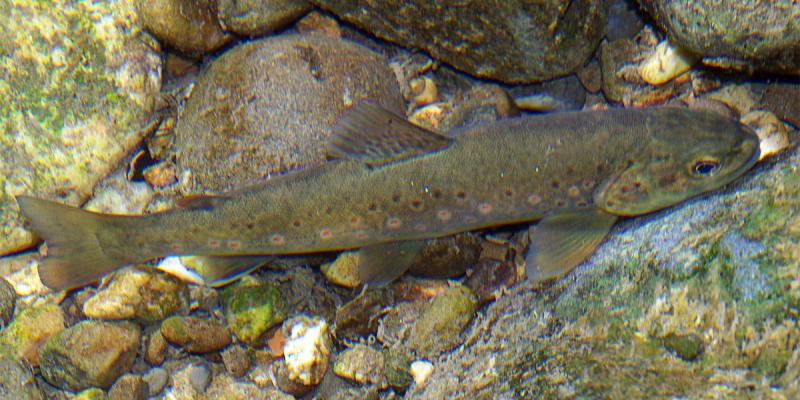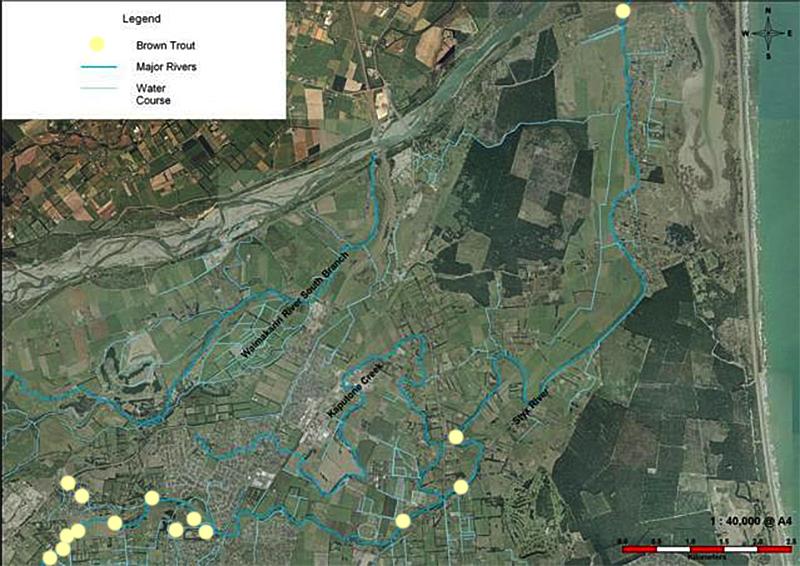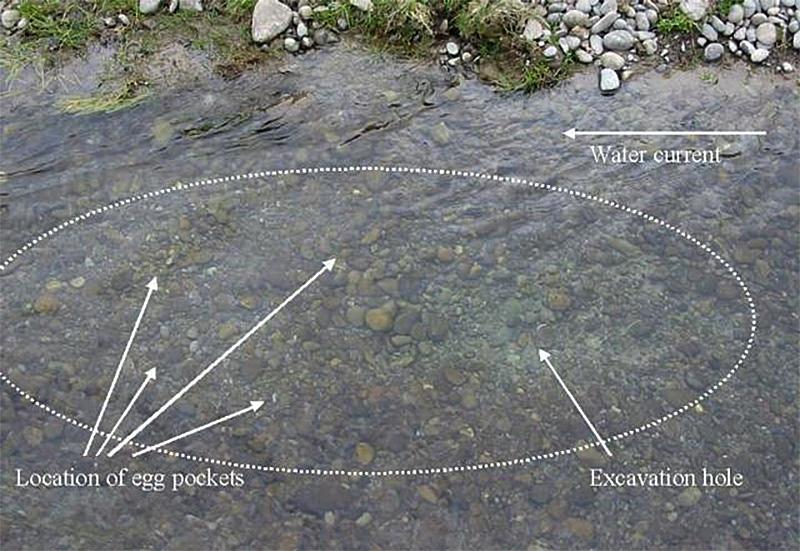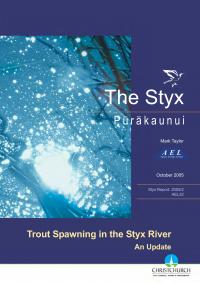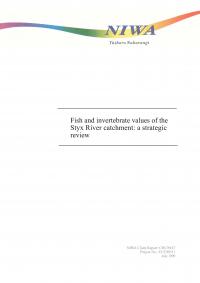Brown Trout
Common Name Brown Trout
Scientific Name Salmo trutta
National Distribution Well-distributed throughout New Zealand, except for Northland.
Distribution in the Styx River
Brown trout are common in the Styx River and Smacks Creek and known to spawn in both of these waterways. They also occur in the lower Kaputone Creek but do not spawn in this tributary.
History and Fishery
Brown trout fry were introduced into the Styx River in about 1868. Originally, the ova (eggs) were shipped from Tasmania, reared in a hatchery constructed in Hagley Park, before being released into the Styx River. The lower river has supported a recreational trout fishery for many years.
Biology
Brown trout spawn from May through to September by depositing their eggs amongst gravels in the fast flowing waters. Each female trout (or hen fish) deposits her eggs in a series of small excavations (called pockets) in the gravels. After fertilisation by an attendant male fish (or jack), the eggs are buried by stones dislodged immediately upstream (McDowall 1990). The distinctive gravel formation containing trout eggs is called a redd.
Trout spawn in four main areas on the Styx River and in a boxed drain near Styx Mill Road.
MAP
Trout spawning surveys have been conducted on the Styx River in 1989 (Eldon & Taylor 1990), the Fish and Game Council in 1999 (Ross 1999), and in 2005 (Taylor).
Historically, trout spawning extended further downstream from Main North Road, and over a greater length of Smacks Creek. Since 2000, there has been a rapid increase in urbanisation within the catchment. Residential development of the formerly rural middle and upper catchment has accelerated to the point that the impacts of some residential developments (ie stormwater discharges, changes in water flow regimes, sedimentation) may have impacted on stretches of waterway that would have historically been used for trout spawning. Changes to the management of the pasture areas since 2000 (fencing, stock removal) at Styx Mill Conservation Reserve has however, seen an improvement in trout spawning along this stretch of waterway. This is illustrated in the last trout redd survey undertaken during the winter of 2005. It indicates an increase in trout redd numbers since the 2000 winter, and a wider distribution.
LONGITUDINAL FREQUENCY DISTRIBUTION
In 2000, preliminary water quality samples from the trout redd suggested dissolved oxygen levels may also be too low for good eggs survival. Further information is being obtained to see if that is still the case.
References
- Eldon, G. A.; Taylor, M. J. 1990. Fisheries survey of the Styx River, summer 1990. MAF Fisheries, Christchurch. New Zealand Freshwater Fisheries Report No. 120. 27 p.
- McDowall, R. M. 1990: New Zealand Freshwater Fishes: A Natural History and Guide. Auckland, Heinemann Reed. 553 p.
- Ross, B. J. 1999. Styx River Trout Spawning Survey - June 1999. North Canterbury Fish and Game Council, Christchurch. Unpublished report No. 4 p.
- Taylor, M. J. 2005. Trout Spawning in the Styx River, Aquatic Ecology Limited, Christchurch. AEL Report No. 32. 26 p.
- Teirney, L. D.; Richardson, J.; Unwin, M. J. 1987. The relative value of North Canterbury rivers to New Zealand anglers. Freshwater Fisheries Centre, MAFFish, Wellington. New Zealand Freshwater Fisheries Report No. 89. 113 p.


